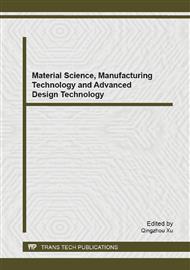p.493
p.496
p.500
p.504
p.508
p.513
p.516
p.520
p.524
Analysis on Freezing Progress of Underground Frost Wall
Abstract:
To optimize the operation parameters, the comparative analysis was used by means of the finite element analysis software ALGOR.In addition, equivalent specific heat and equivalent thermal conductivity were used during frozen. The conclusions were as follows: First of all, the higher velocity was, the bigger convective heat transfer coefficient will be ;What′s more, the convective heat transfer coefficient of the salt solution was 2 times bigger than the glycol solution;Last but the most important thing was that it was the best effect heat transfer that not only the medium was salt solution, but also the velocity was 0.57m/s. The result of experiment was consistent with the results of the simulations after field test.
Info:
Periodical:
Pages:
516-519
Citation:
Online since:
March 2014
Authors:
Keywords:
Price:
Сopyright:
© 2014 Trans Tech Publications Ltd. All Rights Reserved
Share:
Citation:


